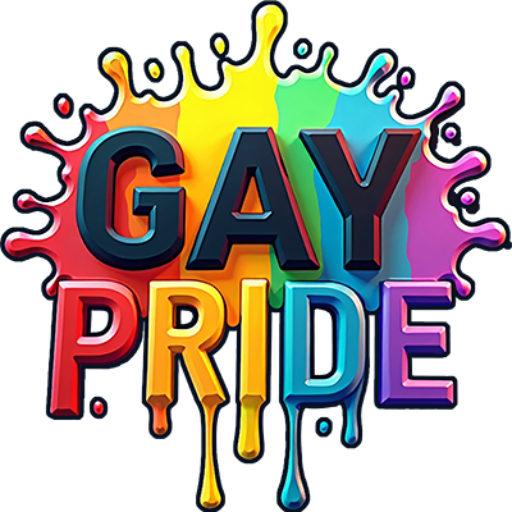Navigating Workplace Discrimination: LGBTQ Experiences
In today’s world, the workplace should be a safe haven for all employees, regardless of their sexual orientation or gender identity. However, LGBTQ individuals often face unique challenges and discrimination. This blog post explores these experiences and offers insights into fostering inclusivity and understanding in professional settings.
Table of Contents
1. Introduction: Understanding the Landscape
2. Recognizing Discrimination: What Does It Look Like?
3. Personal Stories: Voices from the LGBTQ Community
4. Legal Protections: Know Your Rights
5. Fostering Inclusivity: What Employers Can Do
6. Conclusion: Moving Towards an Inclusive Future
7. FAQ
Introduction: Understanding the Landscape 🌈
The journey towards equality and acceptance for the LGBTQ community has been long and complex. While significant strides have been made, workplace discrimination remains a pressing issue. Understanding the challenges faced by LGBTQ individuals in professional settings is the first step in addressing and overcoming these barriers.
Recognizing Discrimination: What Does It Look Like? 🤔
Discrimination in the workplace can be both overt and subtle. It includes:
🔥 Harassment or bullying based on sexual orientation or gender identity
🔥 Being passed over for promotions or projects due to bias
🔥 Receiving unequal pay compared to heterosexual or cisgender colleagues
🔥 Facing microaggressions that undermine confidence and well-being
Recognizing these signs is crucial for both employees and employers to create a more inclusive environment.
Personal Stories: Voices from the LGBTQ Community 🗣️
Hearing firsthand experiences can be powerful in understanding the depth of workplace discrimination. Consider these stories:
🌟 Alex, a transgender man, recounts how his transition was met with resistance and misunderstanding by his coworkers, leading to feelings of isolation.
🌟 Jamie, a lesbian woman, shares how she was repeatedly overlooked for leadership roles, despite her qualifications, because of her sexual orientation.
These personal accounts highlight the emotional and professional toll discrimination can take on LGBTQ employees.
Legal Protections: Know Your Rights 📜
Understanding legal protections is vital for LGBTQ individuals facing workplace discrimination. In many countries, laws are in place to protect against discrimination based on sexual orientation and gender identity. Here’s what you should know:
✅ In the U.S., the Supreme Court’s 2020 ruling in Bostock v. Clayton County affirms that Title VII of the Civil Rights Act protects LGBTQ employees from discrimination.
✅ Many countries have anti-discrimination laws that explicitly cover sexual orientation and gender identity.
✅ It’s essential to familiarize yourself with local laws and workplace policies that safeguard your rights.
Fostering Inclusivity: What Employers Can Do 🌍
Creating an inclusive workplace is not just beneficial for employees but also for the organization as a whole. Here are some strategies employers can adopt:
💡 Implement comprehensive diversity and inclusion training programs.
💡 Establish clear anti-discrimination policies and ensure they are enforced.
💡 Create support networks, such as LGBTQ employee resource groups.
💡 Encourage open dialogue and provide platforms for employees to share their experiences.
Employers who prioritize inclusivity not only enhance their corporate culture but also boost employee morale and productivity.
Conclusion: Moving Towards an Inclusive Future 🌟
While challenges remain, the path to an inclusive workplace is achievable with awareness, education, and action. By understanding the experiences of LGBTQ individuals and implementing meaningful changes, we can create a professional environment where everyone feels valued and respected.
FAQ
Q1: How can I support my LGBTQ colleagues?
A1: Be an ally by listening, showing empathy, and standing against discriminatory behavior. Educate yourself about LGBTQ issues and participate in workplace inclusivity initiatives.
Q2: What should I do if I witness discrimination at work?
A2: Report the incident to HR or a designated authority within your organization. It’s important to take action to ensure a safe workplace for everyone.
Q3: Are there resources for LGBTQ employees facing discrimination?
A3: Yes, many organizations and non-profits offer support and advocacy for LGBTQ individuals. Consider reaching out to groups such as the Human Rights Campaign or local LGBTQ centers for assistance.
Q4: What are microaggressions, and how do they affect LGBTQ employees?
A4: Microaggressions are subtle, often unintentional, discriminatory comments or actions. They can create a hostile environment and negatively impact the mental health of LGBTQ employees.
Q5: Can employers require employees to disclose their sexual orientation?
A5: No, employees are not obligated to disclose their sexual orientation or gender identity. Such information is private, and employers should respect employees’ choices regarding disclosure.

